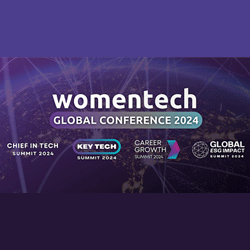What to Know About Using Big Data to Hire New Employees
April 21, 2021 No CommentsFeatured article by Pamela S., Independent Technology Author
What if you could take away most of the guesswork involved in talent acquisition? If you run a business, you know how costly it can be when you hire a bad fit. The U.S Department of Labor predicts that a poor hire can cost about 30% of the person’s first year anticipated salary.
Thankfully, companies have a fitting solution. Today, the recruitment sector has hopped on the Big Data trend to make the recruitment process more efficient and prevent such financial losses.
But what exactly is Big Data?
Understanding Big Data and Its Relationship With Talent Acquisition
Big data is a large volume of structured and unstructured data that’s continuously multiplying due to human activity. In recruiting, Big Data, a.k.a people analytics, establishes human patterns. Think of it as an effort to generate a job applicant’s entire profile long before they get into the interview room.
For HR, Big Data utilization entails data:
* Collection
* Interpretation
* Creation
* Mining
* Sharing
* Visualization
* And privacy
For instance, if IT Briefcase is trying to understand employee retention, the first step would be to understand what motivates staff to develop a strategy that will improve staff retention eventually. Using Big Data will reveal the employees’ patterns, individual experiences, and associations.
Big Data requires specialized tools rather than standard software for analysis because of the large data sets. Picture your online presence, from social media and professional exploits to other nonprofessional browsing activities. Now imagine sifting through thousands of other applicants’ information.
Big Data and Cloud Computing
As mentioned earlier, Big Data is constantly expanding. Therefore, performing Big Data analytics requires a larger storage capacity. The best way to overcome this infrastructure hurdle is through cloud computing.
Transferring big data to the cloud allows seamless analytics, promotes collaboration, and improves data sharing. Other benefits include scalability and cost-effectiveness
Case Study of People Analytics
During a 2015 conference at the Wharton Business School, JetBlue Airlines revealed that people analytics had contributed to their hiring successes. Traditionally, the company would hire flight attendants based on their politeness. However, after conducting a customer data analysis, JetBlue discovered that customers preferred helpful attendants to nice ones.
How Big Data Improves the Recruitment Process
Big Data provides recruiters with information that goes beyond your one-page CV and cover letter. Here’s how this information benefits HR departments.
– With proper analysis of workplace trends, recruiters can use Big Data to manage their workforce and reshape talent acquisition.
– Big Data is cost-effective as it provides an option of utilizing IT using the existing HR rather than hiring more HR staff to meet the enormous workload.
-By using natural language processing, recruiters can discover suitable job candidates in their present workforce.
– Workforce analytics provide valuable insights into employee satisfaction, revealing how you can improve productivity, thereby heightening your business bottom line.
– Contrary to the belief that analytics erases the human aspect of HR, Big Data minimizes error. Automation frees up your HR to perform other essential functions
Big Data Recruiting Techniques
Several techniques that use big data for recruiting new employees exist.
1. Data mining
Recruiters can use data mining to reveal job candidates’ performance history and the likelihood of retention. Such analytics may tell a candidate’s preferred job board, prompting the company to increase their advertisements on that site. Data mining also helps recruiters access passive applicants.
Data mining also involves social recruiting, which consists of scrutinizing candidates’ social media profiles to determine whether they are the right fit skills-wise and culturally.
2. Keyword screening
Big Data assists recruiters in using specific keywords to perform searches on different search engines to get prospective leads. This screening technique also filters out unqualified candidates.
3. Testing
Recruitment processes typically use skills and behavioral surveys. Big Data helps to identify not only the technical skills but also soft skills. Such analytics improve these tests’ accuracy.
Things to Consider Before Using Big Data to Hire New Employees
There are several things every recruiter should have in mind before using Big Data for recruiting.
– While Big Data shows potential leads, it would be best to approach people analytics with a level of uncertainty.
– Recruiters must ensure that the analytics type does not violate the U.S. equal opportunity laws.
– Your company must confirm that they are GDPR compliant before using information not on the applicant’s resume to make a hiring decision. The best option is to seek counsel from experiencedemployment lawyers.
– It would be wise for companies to hire Big Data engineers to prevent data misinterpretation. Also, recruiters should be precise on which metrics to use.
In Sum
Big Data is undeniably a positive advancement in recruiting. Being in a candidate-centric job market means that recruiters must be innovative to acquire the best talent. Therefore, big data is the best way to sift candidates, gain relevant insights, and ultimately improve staff retention. Is your company utilizing Big Data? Now is the best time to start.

 Inside the Briefcase
Inside the Briefcase












Sorry, the comment form is closed at this time.